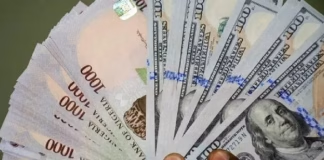The British Pound Sterling dipped to a three-week low on Tuesday, October 3, after data showed construction sector activity tumbled in September, and as investors worried about political and economic uncertainty surrounding Britain’s exit from the European Union.
By 1500 GMT, sterling was trading down 0.2 percent on the day at $1.3249, having earlier hit a three-week low of $1.3222. It also hit an 11-day low of 88.815 pence per euro, down around half a percent on the day.
Brexit minister David Davis told the Conservative Party conference on Tuesday that Britain wants to negotiate an exit agreement with the EU but is ready to walk away with no deal, and that officials were “contingency planning” to make sure all scenarios were covered.
The comments added to a sense of uncertainty over Britain’s future – both political and economic – for investors that has dragged sterling down more than 10 percent against the dollar since last June’s vote for Brexit.
Despite foreign minister Boris Johnson saying at the conference that the cabinet was united behind every syllable of Prime Minister Theresa May’s recent speech in Florence, the event has been overshadowed by reports of disunity and leadership bids from rivals in the government.
“All of this noise is just adding some uncertainty, rather than providing clarity,” said ING currency strategist Viraj Patel.
“For sterling, the next big thing is the next round of Brexit negotiations, the final round, and to see if there is any meaningful steps towards a transitional deal.”
Numbers from the construction sector earlier showed activity suffering the sharpest fall since just after last year’s Brexit vote, on concerns over the economic outlook.
Data last week showed speculators had turned positive on the pound for the first time in almost two years in the week up to last Tuesday, with expectations for a Bank of England interest rate hike as well as optimism around Brexit negotiations driving investors to buy back into the currency.
But sterling has fallen almost 2 percent against a stronger dollar in the week since then, hit by worries over Britain’s economic health as well as political concerns.
“You’d need a clearer pattern of economic weakness to take (sterling) dramatically lower or to get the basic trend to be different,” said Kit Juckes, macro strategist at Societe Generale in London.














